The History Of Buick Skylark

The Buick Skylark was a passenger car produced by the Buick division of General Motors. The model was made in six production runs. In each run, the car design varied dramatically due to changing technology and tastes, as well as new standards implemented over the years.
Introduced to mark Buick's 50th anniversary, the Skylark (a name previously used by short-lived Hupp for its sporty 1939 Cord 810-based Skylark) was one of three specialty convertibles produced in 1953 by General Motors; the other two were the Oldsmobile Fiesta and the Cadillac Eldorado. All three were limited-production vehicles promoting General Motors' design leadership. Of the three, the Skylark had the most successful production run with 1,690 units. This was considered an amazing sales feat, since the car had a list price in 1953 of slightly in excess of US$5,000. However, many of these vehicles languished in dealer showrooms and were eventually sold at discount.
All 1,690 regular-production Skylarks built in 1953 (and all in 1954) were convertibles. The 1953s were based on the two-door Roadmaster convertible, having identical dimensions (except height), almost identical convenience and appearance equipment, and a Roadmaster drive train. In 1953, the model designation for the Skylark was 76X, while the model designation for the Roadmaster convertible was 76R. The few options available on the Roadmaster convertible were standard equipment on the Skylark, albeit the base price for the well-equipped Roadmaster convertible was only about US$3,200.
The 1953 Skylark featured V8 power and a 12-volt electrical system, both a first for Buick, as well as full-cutout wheel openings, a styling cue that would make its way to the main 1954 Buick line. Also making its way into the 1954 Buick line was the cut-down door at the base of the side window line that bounced back up to trace around the rear window (or convertible top). This styling stayed with Buick for many years and can be found on any number of automobile brands to this day.
The 1953 Buick Skylark was a handmade car in many respects. The stampings for the hood, trunk lid and a portion of the convertible tub were the same as the 1953 Roadmaster convertible (and Super convertible, model 56R). The stampings for the front fenders, rear fenders, outer doors, and a portion of the convertible tub were unique to the Skylark. All Skylark convertible tubs were finished with various amounts of lead filler, so it is not unusual to find a substantial amount of the substance just behind the doors near the bottom of the window line. The inner doors of the Skylark were made from the inner doors of the 2-door Roadmaster and Super by cutting the stamping in half approximately parallel with the ground and then welding the two pieces back together in a jig at an angle that produced the necessary door dip (see photos of finished car).
Although there were many unique design features of the 1953 Skylark, one that goes almost unnoticed today is that the top and seating of the car were lowered a few inches below the Roadmaster and Super convertibles. This was achieved not by changing the frame, body or suspension, but by cutting the windshield almost three inches shorter and lowering the side windows and convertible top frame. To accommodate people without bumping their heads with the top up, the seat frames and steering column were lowered.
The wheels of the 1953 Skylark were true wire wheels, produced by Kelsey-Hayes, with everything chromed except the plated and painted "Skylark" center emblem. Although this was high style in 1953, the wheels were heavier than the regular steel wheels, would require periodic truing to keep them straight and balanced, and required tubes within the tires just when tubeless tires were becoming the norm, as they were throughout the rest of the Buick line.
For 1954, the Skylark returned, although radically restyled . This Skylark featured elongated wheel cutouts, the interior of which were available in a contrasting color to the body color. For example, black cars could receive white or red wheel wells. The trunk of the restyled Skylark was sloped into a semi-barrel shape. Tail lights were housed in large chromed fins that projected from the tops of the rear fenders.
The car was now based on the all-new shorter Century/ Special chassis and not the top-of-the-line Roadmaster/ Super chassis, also all-new for 1954. However, it did share the Roadmaster and Century powertrain, the highest output in the 1954 Buick model lineup. This powertrain was an evolutionary improvement, but very similar to the 1953 powertrain.
The model designation for the 1954 Buick Skylark was "100", which was unique to that model. The short wheelbase cars were the Buick Special, series 40; the Buick Century, series 60; and the Buick Skylark, series 100 (a "series" of just one model). All production Buick Skylarks were built as two-door convertibles and had the same luxury equipment as the 1953 Buick Skylarks.
Like its 1953 counterpart, the 1954 Skylark had a number of unique sheetmetal stampings, but without the hand labor that went into 1953 Skylark production. In addition to unique front and rear fenders with the elongated wheel cutouts, the 1954 Skylark had a unique trunk with its semi-barrel shape and huge, rounded chrome fins. The hood was also unique to the 1954 Skylark, but in a small way. The hood ornament was different from all other Buick models for the 1954 model year. However, this same hood ornament, although unique in size to this one model in 1954, was to portend the design of the 1955 Buick hood ornament used on all models of that year.
The cost of the Skylark, mixed with the public's dislike for the restyle and its perceived step down in rank to the Special/ Century series versus the 1953 rank with the Super/ Roadmaster series, resulted in poor sales and the car's demise at the end of the 1954 model year.
Engines
- 322in³ (5.3L) Nailhead V8
In the fall of 1960, General Motors introduced a trio of new compact cars for the 1961 model year that shared the same chassis, engines (with some differences between the three models), and basic sheet metal, although each had unique front and rear styling and differences in exterior and interior trim. Based on the Chevrolet Corvair chassis, the Pontiac Tempest, Oldsmobile F-85, and Buick Special featured front engines and rear-wheel drive.
Introduced in the middle of the 1961 model year and based on the basic Buick Special two-door sedan (also referred to as a coupe), the 1961 Buick Special Skylark had unique Skylark emblems, taillight housings, lower body side moldings, turbine wheel covers, and a vinyl-covered roof. It also featured a plush all-vinyl interior with bucket seats as an option.
The basic 1961 Buick Special came standard with a 215 cubic-inch, all-aluminum block, V-8 engine with a 2-barrel carburetor that produced 155horsepower (116kW) at 4600 rpm. The 1961 Buick Special Skylark came standard with a version of this same engine (optional on other Specials) that used a higher compression ratio and a 4-barrel carburetor to produce 185horsepower (138kW).
For the 1962 model year, the Buick Skylark became a model in its own right, instead of being a subseries of the Special. The 1962 model used the same basic sheet metal as the 1961 models, but was available in two new body styles: a two-door convertible coupe (shared with the Special and Special Deluxe models) and a two-door (pillarless) hardtop coupe that was unique to the Skylark. Tuning of the 215 cubic-inch V-8 increased power to 190horsepower (140kW) at 4800 rpm.
The 1963 Buick Skylarks used the same chassis and wheelbase as the previous 1961 and 1962 models, but adopted new sheet metal that featured boxier styling. Length was increased by five inches to 193inches (4,900mm), and the 215 cubic-inch V-8 generated 200horsepower (150kW) at 5000 rpm. The 1963 Skylark was available as a two-door convertible coupe or a two-door (pillarless) hardtop coupe. The 1963 Buick Special shared most sheet metal with the Skylark, but was available as a 2 door pillared hard top, a four dour sedan, a convertible and a station wagon. And the wagon being vary rare today, with the four speed t-10 trans, along with Engine choices, were a 198 cubic-inch V-6 with 2-barrel carburetor, a 215 cubic-inch V-8 with two-barrel carburetor, and a 215 cubic-inch V-8 with 4-barrel carburetor. Transmission choices were a 'three on the tree' manual transmission, a floor shift Borg-Warner t-10 4-spd. manual transmission, and a two-speed automatic. The two speed "Dual Path Turbine Drive" automatic was a Buick design and shared no common parts with the better known Chevrolet Power-Glide transmission.
Beginning with the 1964 model year, the Buick Skylark, along with the lower-priced Special from which it was derived, would move to a new intermediate-size chassis that was shared with the Oldsmobile F-85, Pontiac Tempest, and the new Chevrolet Chevelle. The new chassis had a wheelbase of 115-in and the Buick Special and Skylark had a length of 203.5-in. (The similarities between the Skylark and the Pontiac Tempest would play a key role in the plotline of the film My Cousin Vinny.)
The 215 cubic-inch-displacement aluminum block V-8 engine was discontinued, and the associated tooling eventually was sold to the British manufacturer, Rover. That company would produce the engine in several versions for use in its sedans and Land Rover sport utility vehicles and trucks.
The standard Skylark engine was now a 225 cubic-inch all cast iron block V-6 with a Rochester 1-barrel carburetor that generated 155horsepower (116kW) at 4400 rpm. This engine was introduced in 1964, very similar to the earlier V6 beginning with the 1962 model year which had a smaller displacement of 196 cubic-inch. This engine was basically a Buick V-8 300 CID engine with two cylinders sawed-off. The optional engine was a 300 cubic inch cast iron block and heads V-8 with a Rochester 2-barrel carburetor that generated 210horsepower (160kW) at 4600 rpm. An optional V8 version of the 300 CID engine was offered with aluminium heads with a 11:1 compression and a 4-barrel carburator generating 250 hp. A long throw 4 speed hurst shifter was available.
In addition to the two-door convertible and hardtop coupe body-styles, a Skylark four-door sedan became available for the first time. Skylarks, however, would continue to have higher levels of exterior and interior trim compared to the Special and Special Deluxe from which they were derived. All-vinyl bucket seats would be standard on the convertible and optional on the hardtop coupe. The sedan would come with cloth-and-vinyl seats standard, and an all-vinyl interior would be optional. The Sylark Coupe had a lower profile, sitting lower to the road then the Buick Special models.
The Skylark in 1964-1965 were available in a pillar-less coupe (Hard Top) two-door sedan version, as the Specials and Special Deluxes only came in pillared coupe versions. Beginning with the 1964 model year, a two-door sedan (pillared coupe) was added to the Skylark lineup. Inspired in no small part by the sales success of the 1964 Pontiac Tempest LeMans GTO, the Gran Sport option became available in mid 1965 for the three two-door Skylark models. The Gran Sport option featured Buick’s 401 cubic-inch-displacement V-8 engine using a Carter 4-barrel carburetor that produced 325horsepower (242kW) at 4400 rpm (it was listed as 400 cubic inches in sales literature, supposedly to escape a General Motors mandate that engines larger than 400 cubic inches should not be used in intermediate-sized cars). Other Gran Sport features were unique Gran Sport badging, a heavy-duty radiator, and dual exhaust.
In the 1966 model year, the four-door (pillared) sedan was replaced by a four-door (pillarless) hardtop sedan. The convertible, hardtop coupe, and two-door sedan continued to be available.
The four-door sedan would rejoin the lineup for the 1967 model year, making a total of five Skylark body styles. Beginning with the 1967 model year, only the Skylark two-door sedan would be available with the Buick V-6 engine as standard. The 300-cubic-inch V-8 would be standard on all other models, with the exception of the four-door hardtop sedan, which came with a 340 cubic-inch-displacement V-8 engine using a Rochester 2-barrel carburetor and producing 220horsepower (160kW) at 4400 rpm.
The previous Buick Skylark Gran Sport was relabeled as the Buick Skylark Gran Sport 400 to reflect its engine. A new model was the Buick Skylark Gran Sport 340, also using the 340-cubic-inch V-8 that was standard on the Skylark four-door hardtop. The Gran Sport 340 was available only as a two-door hardtop coupe.
The 1968 model year was one of significant change for the Buick Skylark. Although still using the same basic chassis, all of GM’s mid-sized cars adopted a policy of using two different length wheelbases. Two-door models used a shorter wheelbase of 112-in, while four-door models used a longer wheelbase of 116-in (the Buick Sportwagon and Oldsmobile Vista-Cruiser used an even longer wheelbase of 121-in). All of GM’s mid-sized cars received all-new sheet metal.
The Gran Sport, previously an option package available on the Skylark, became a separate series. In a reshuffling of models in the lineup, the Special Deluxe replaced the previous Special. The Skylark nameplate was shuffled down a notch to replace the previous Special Deluxe. The previous Skylark was replaced by a new Skylark Custom.
The basic Skylark was available as a two-door hardtop coupe or a four-door sedan. The Skylark Custom came as a two-door convertible coupe, two-door hardtop coupe, four-door hardtop sedan, or four-door sedan.
The previous V-6 was discontinued and the associated tooling was sold to Kaiser Industries, which used the V-6 in its Jeep trucks and sport utility vehicles. The base engine in Buick Skylarks (and Buick Special sedans) became a 250-cubic-inch inline six-cylinder engine using a 1-barrel Rochester carburetor (borrowed from Buick’s sister Chevrolet division) that produced 155horsepower (116kW) at 4200 rpm.
Optional on the Skylark and standard on the Skylark Custom was a new 350-cubic-inch V-8 engine using a 2-barrel Rochester carburetor that produced 230horsepower (170kW) at 4400 rpm. This engine was based on the previous 300- and 340-cubic-inch-displacement V-8 engines. The Buick Special name was dropped after the 1969 model year.
For 1970, the mid-sized Buicks once again received new sheet metal and the Buick Skylark name was moved down another notch, replacing the previous Buick Special. The Skylark became the entry-level Buick available in two- and four-door sedans with the 250-cubic-inch inline-6 as standard and the 350-cubic-inch V-8 (260 horsepower at 4600 rpm) available as an option.
Replacing the previous Buick Skylark was the Buick Skylark 350, available as a two-door hardtop coupe or four-door sedan with the 350-cubic-inch V-8 as standard equipment. This 350-cubic-inch Engine was a different design then the Chevy's 350 CID engine (4.000 in × 3.48 in)the Buick design had a longer stroke and smaller bore (3.80 X 3.85 in) allowing for lower-end torque, deep skirt block construction, higher nickel-content cast iron, 3.0" crank main journals, and 6.5" connecting rods, the distributor was located in front of the engine (typical of Buick), the oil pump was external and mounted in the front of the engine, the rocker arm assembly had all rocker arms mounted on a single rod and were not adjustable . The Skylark Custom continued to be available, also using the 350-cubic-inch V-8 as standard equipment and still available as a two-door convertible coupe, two-door hardtop coupe, four-door hardtop sedan, and four-door sedan. Buick Gran Sport models continued to be available as a separate series. The Buick Sport Wagon name was now used on a conventional four-door station wagon that no longer featured a raised roof with glass panels over the cargo area, or a longer wheelbase, as in the past. It now used the same 116-in wheelbase as the Buick Skylark four-door sedan and the now-discontinued Buick Special four-door Station Wagon. It became, in effect, a Buick Skylark four-door station wagon in all respects but the name.
For the 1971 model year, the base Skylark was available only with the inline 6, now only putting out 145horsepower (108kW) due to emission control devices, but in a two-door hardtop coupe body-style (in addition to the previous two- and four-door sedans. The Skylark 350 had a V-8 engine that put out only 230horsepower (170kW). It was now available as a two-door sedan in addition to the previous two-door hardtop coupe and four-door sedan.
1972 was the last model year for the mid-sized Buick Skylark. During this model year many pollution controls were added to the Engines, Compression was lowered, engines had to accept leaded and unleaded gas, and spark timimg was retarted (no vaccuum advance in lower gears)while driving in lower gears to reduce emissions. For 1972, the base Buick Skylark used the 350-cubic-inch V-8 with the 2-barrel Rochester carburetor (now putting out 145 horsepower) as standard equipment. A new federally-mandated system to calculate power was put into effect that year, and the actual engine performance was probably comparable but slightly lower because of pollution controls in the 1972 model year to the 230horsepower (170kW) that was listed for the previous year. The Skylark 350 now used a version of the same V-8 engine as the base Skylark, but with a 4-barrel Rochester carburetor that generated 170horsepower (130kW).
An interesting limited-production model was the 1972 Buick Skylark 350 Sun Coupe, which was a Skylark 350 Hardtop Coupe that featured a sunroof and vinyl covering over the front portion of the roof (a landau design).
Skylark Customs were available with the same 350-cubic-inch V-8 engines available in the basic Skylark and the Skylark 350. The Custom had an upgraded interior and dash with some extra chrome. Convertibles only came in the Skylark Customs and the Skylark 350's.
For the 1973 model year, the Buick Gran Sports, Skylarks, and Sport Wagons would all be replaced by the new mid-sized Buick Century. Since Centuries were available with Gran Sport trim, the Gran Sport name was once again reduced to being an option package.
Engines
- 225in³ (3.7L) V6 (1964-67)
- 250 in³ (4.1 L) I6 (1968-71) Supplied by Chevrolet
- 300in³ (4.9L) V8 (1964-67, 1964-65 Sport Wagon)
- 340in³ (5.6L) V8 (1967 Skylark 4-Door Hardtop Sedan, 1967 GS 340, 1966-67 Sport Wagon)
- 350in³ (5.7L) V8 (1968-72, 1968-72 Sport Wagon, 1968-69 California Gran Sport, 1968-69 Gran Sport 350, 1970-71 Gran Sport, 1972 Gran Sport 350)
- 401in³ (6.6L) V8 (1965-66 Skylark Gran Sport)
- 400in³ (6.6L) V8 (1967 GS 400, 1968-69 GS 400, 1968-69 Sportwagon 400)
- 455in³ (7.5L) V8 (1970-72 Gran Sport 455)
In the middle of the 1973 model year, Buick returned to the compact market with the Buick Apollo, using General Motors’ X-body platform, which was heavily based on the Chevrolet Nova. When the car was extensively restyled for the 1975 model year, the two-door hatchback sedan (coupe) and two-door sedan (coupe) were rechristened as “Skylark” models, while the four-door sedan remained as an “Apollo.”
Two-door hatchback sedan and four-door sedan models were available as the base Skylark or as the more upscale Skylark S/ R. Four-door sedans were available as the base Apollo or the more upscale Apollo S/ R. In addition, there was a very plain, lower-priced Skylark “S” available only as a two-door sedan with minimal interior and exterior trim.
The standard engine for the Buick Skylarks was Buick’s own 231-cubic-inch (3.8 liter) V-6 engine with a 2-barrel carburetor creating 110horsepower (82kW) at 4000 rpm. Buick purchased back the dies for the engine from American Motors, which acquired them when the company purchased the Kaiser Jeep division from Kaiser Industries. The Apollo used Chevrolet’s 250-cubic-inch (4.1 liter) inline 6-cylinder engine.
Optional engines included the Oldsmobile 260-cubic-inch (4.3 liter) V-8 with a 2-barrel carburetor producing 110horsepower (82kW) at 4000 rpm, and the Buick 350-cubic-inch (5.7 liter) V-8 with either a 2- or 4-barrel carburetor. In 1976, the 5.7 liter V-8 engines produced 140horsepower (100kW) at 3200 rpm with the 2-barrel carburetor, and 155horsepower (116kW) at 3400 rpm with the 4-barrel carburetor.
Beginning with the 1976 model year, the four-door sedans used the Skylark and Skylark S/ R names instead of the previous Apollo, and came with the 3.8 liter V-6 engine as standard.
The 260-cubic-inch (4.3 liter) V-8 was discontinued after the 1976 model year. For the 1977 model year, it was replaced by a pair of V-8 engines.
Available as an option in 1977 was a 301-cubic-inch (5.0 liter) V-8 with a 2-barrel carburetor, which produced 135horsepower (101kW) at 4000 rpm (supplied by Pontiac). Also available was a 305-cubic-inch (5.0 liter) V8 with a 2-barrel carburetor, which produced 145horsepower (108kW) at 3800 rpm (supplied by Chevrolet). The Buick-built 5.7 liter V8 was still available, but only with the 4-barrel carburetor.
Beginning with the 1978 model year, Chevrolet’s 5.7 liter (350 cubic-inch) V8 with a 4-barrel carburetor, which produced 170horsepower (130kW) at 3800 rpm, also was available. Also in that year, the Skylark Custom replaced the Skylark S/ R.
The 1979 model year saw the discontinuance of the Skylark Custom two-door hatchback coupe (the base V-6 produced 10horsepower (7.5kW) more than 1978’s version). The 1979 model year was short because, midway through it, the all-new 1980 models were introduced early.
Engines
- 231 in³ (3.8L) Buick V6 (1975-79)
- 260 in³ (4.3L) Oldsmobile V8 (1975-76)
- 301 in³ (5.0L) Pontiac V8 (1977-79)
- 305 in³ (5.0L) Chevrolet V8 (1977-79)
- 350 in³ (5.7L) V8 Buick (1975-79)
- 350 in³ (5.7L) V8 Chevrolet (1978-79)
Iran
The Buick Skylark was manufactured in Iran from 1975 until 1987, under the brand name of "Buick Iran." The first generation was known as B2 and the second and last generation was known as the B3. This car was equipped with a 5.7L engine and full option package (power door locks, power steering, automatic transmission). The Cadillac Seville and Chevrolet Nova were manufactured in Iran during the same period. It appears that these models were basically the same as those built in the U.S. from 1975 to 1979.
GM ceased all production of vehicles in Iran in December 1987.
The 1980 to 1985 Skylark shared GM's new X-body architecture with the Chevrolet Citation, Pontiac Phoenix, and Oldsmobile Omega and would bear some resemblance to the G-body mid-size cars. GM's X-body would become the basis for GM's A-body mid-size cars that would be introduced as 1982 models. The new front-wheel-drive Skylark was introduced in the spring of 1979 as an early 1980 model equipped with MacPherson strut front suspension and front disc brakes, featuring a transversally mounted engine. The new optional 2.8 liter V6 was designed specifically for the X-cars.
The Skylark was available in two- or four-door sedan bodystyles, and in base, Sport, or Limited trims. The standard 2.5 liter Iron Duke 4 used a 2-barrel Rochester carburetor and produced 90hp (67kW) at 4000 rpm. The optional 2.8 liter V6 also used a 2-barrel Rochester carburetor and produced 115hp (86kW) at 4800 rpm. A four-speed manual overdrive transaxle was standard with a three-speed automatic transaxle as an option.
For the 1982 model year, the base 2.5 liter engine received fuel injection. The optional 2.8 liter V6 was joined by a more powerful high-output version that produced 135hp (101kW) at 5400 rpm. For the 1983 model year, the Skylark received a mild face lift in the form of a new grille (the front parking lamps moved from outside the headlights to inside). The base Skylark became the Skylark Custom. The Sport model was replaced by the T-Type, which was available only as a two-door coupe and came with the high-output version of the 2.8 liter V6 engine as standard equipment. In 1985, the last year of production, the X-body Skylarks were available only as four-door sedans in Custom or Limited trim. The two-door Skylarks were replaced by Buick's new Somerset Regal two-door sedan, built on GM's new N-body.
Engines
- 1980-1985 Tech-4 2.5L (151in³) I4 Supplied by Pontiac
- 1980-1985 LE2 2.8L (173in³) V6 Supplied by Chevrolet
Beginning with the 1985 model year, the two-door coupe was replaced by the Somerset Regal coupe built on the Oldsmobile-developed N-body platform. This generation of compact Buicks featured a more upscale and aerodynamic design than its predecessor, incorporating the long-hood/ short-deck look popular at the time. With the start of the 1986 model year, it lost the Regal suffix from its name and was known simply as Somerset. The Skylark name was moved to a four-door sedan version of the Somerset. This version of the Skylark has a spilt bench seat with a center console with a column shift, which was particularly odd since it was a compact car about the size of a Nissan Stanza.
The 1986 Skylark would continue to be available as either a Custom or a Limited model. The standard engine would continue to be the 2.5 liter Iron Duke 4, now available with a five-speed manual transaxle as standard and a three-speed automatic as an option. A new optional engine would be the fuel-injected Buick-designed 3.0 liter V6, generating 125hp (93kW) at 4900 rpm (it replaced the previous 2.8 liter Chevrolet-designed V6s). The 3.0 liter V6 was available only with a three-speed automatic transaxle.
Beginning with the 1987 model year, the four-door Skylark was available as a sporty T-Type model.
For 1988 models, the Somerset name would be dropped and Buick's two-door N-body compact would share the Skylark nameplate with its four-door counterparts. A new engine option for 1988 models was the fuel-injected, Oldsmobile-designed 2.3 liter DOHC Quad-4 4-cylinder engine that produced 150hp (110kW) at 5200 rpm. An S/ E package for Custom models replaced the previous T-Type trim.
On 1989 models, a fuel-injected 3.3 liter V6 (160 hp at 5200 rpm) replaced the previous 3.0 liter V6. A new LE package become available on four-door sedans that featured a vinyl roof that covered part of the rear side windows.
For 1990, a new base Skylark was added, moving the Custom model up to replace the Limited. The S/ E package was replaced by a new Gran Sport two-door sedan, reviving a name that had not been connected with the Skylark for many years. The LE ("Luxury Edition") sedan would become a full-fledged model. 1991 was the last year the N-bodied Skylarks would be offered, and there were few changes from 1990. The only transaxle offered for 1991 was the three-speed automatic. Prouduction have said to have ended on May 1, 1991
Engines
- 1986-1991 Tech-4 2.5L (151in³) I4 Supplied by Pontiac
- 1987-1991 Quad-4 2.3L (138in³) I4 Supplied by Oldsmobile
- 1986-1988 3.0L (181in³)V6
- 1989-1991 3300 3.3L (204in³)V6
Radical new wedge-shaped styling appeared in 1992, with a sharply-pointed grille reminiscent of the 1960s model, although the grille may have been inspired by that of the 1939 Buick. The Skylark's new aerodynamic body had a low 0.319 coefficient of drag, compared to 0.374 for the previous version.
It was initially offered in two- and four-door sedan bodystyles and in base and Gran Sport versions. The base engine was the 2.3 liter Quad 4, which produced 120hp (89kW) at 5200 rpm. The optional 3.3 liter V6 (standard on the GS) produced 160hp (120kW) at 5200 rpm. All Skylarks came with the three-speed automatic transaxle.
For the 1993 model year, the base model was replaced by Custom and Limited trims. For 1994, a new 3.1 liter V6 (160 hp at 5200 rpm) replaced the previous 3.3 liter V6 as standard on the GS and optional on the others. The Limited coupe was dropped for 1994, but returned for 1995.
Mechanical changes for the 1995 model year included the upgrading of the standard 2.3 liter Quad 4 engine from a SOHC design to a DOHC design, increasing power to 150hp (110kW) at 6000 rpm. The three-speed automatic transaxle continued to be standard with the base 4-cylinder engine, but a new four-speed automatic (electronically-controlled 4T60-E) was optional with the 4-cylinder engine and standard with the V-6.
Skylark received a minor facelift for the 1996 model year in the form of a more conventional-looking grille. The previous 2.3 liter 4 was replaced by a new 2.4 liter DOHC 4 that produced 150hp (110kW) at 6000 rpm. The previous three-speed automatic transaxle was discontinued and the four-speed automatic became standard on all Skylarks. An on-board diagnostic system (OBD II) was standard. Buick offered an "Olympic Gold" edition of the 1996 Skylark to commemorate the 100th anniversary of the Olympic Games. It featured gold USA/ 5-ring badging on the fenders, gold "Skylark" badges, gold-accented wheel covers, and gold accent trim.
There were only minor changes to the lineup for the 1997 model year, which was the last year that it would be available to the public in showrooms. A single-model 1998 Skylark sedan was produced for fleet-only sales, mostly to auto rental companies. Most of these 1998 models, the last year that Buick used the Skylark name and produced a compact car, were eventually resold to the general public as used cars. Buick never provided a direct replacement for the car and potential buyers of an entry-level Buick were directed to the mid-sized Century.
The Skylark production line in Lansing was retooled to build the 2000–2003 Chevrolet Malibu.
Engines
- 1992-1995 Quad-4 2.3L (138in³) I4 Supplied by Oldsmobile
- 1996-1998 LD9 2.4L (146in³) I4
- 1992-1993 3300 3.3L (204in³) V6
- 1994-1998 3100 3.1L (191in³) V6
- Flammang, James M. & Kowlake, Ron, Standard Catalog of American Cars: 1976-199, 3rd Edition (Iola, WI: Krause Publications, 1999)
- Gunnell, John, Standard Catalog of American Cars: 1946-1975, Revised 4th Edition (Iola, WI: Krause Publications, 2002)
From Wikipedia, the free encyclopedia
More About Buick Skylark
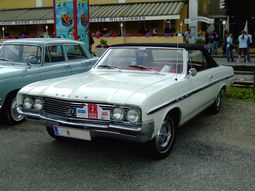
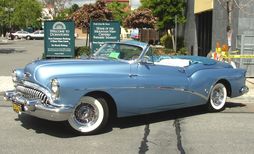
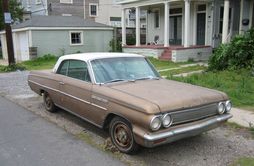
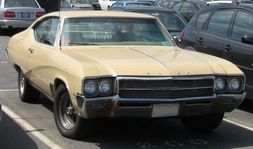
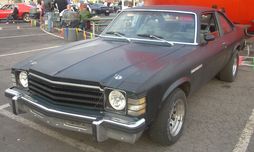
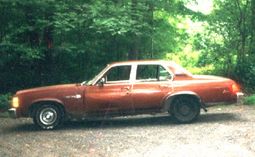
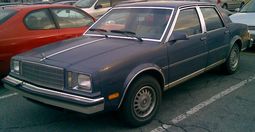
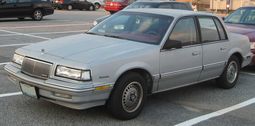
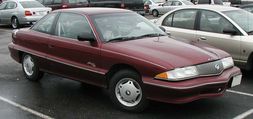
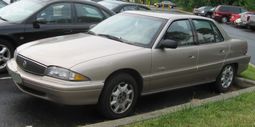
|